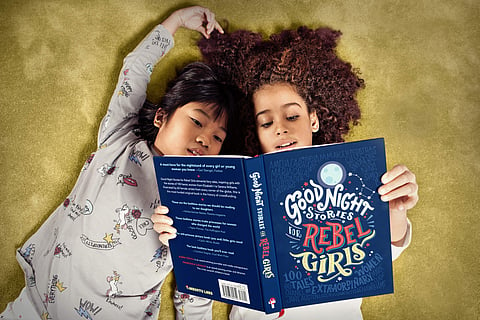

What’s the storyline of your favourite childhood fairy tale? Is it the one where a fair maiden (read pale, young, unmarried girl) is trapped in a castle by an evil old hag and a prince, who was incidentally travelling through the forest, swoops in to save the damsel in distress? Or is it the one where the princess, who is cursed to sleep for a hundred years, wakes up after a prince kisses her? Or maybe it’s the one where a young girl, who is the epitome of every misleading beauty standard, gets a wish from her fairy godmother to live the night of her dreams in search of her one true love that unfortunately comes with a curfew? It’s quite obvious that these age-old fairy tales that we’ve grown up with might influence young minds with typical gender stereotyping and also nurture unrealistic expectations throughout their adult lives.
So, how do we intend to teach young girls that they have the right to dream and speak their minds (without fairy godmothers and princes) if we’re going to read them stories where the day is always saved by Prince Charming? That’s exactly why Elena Favilli and Francesca Cavallo, authors of Goodnight Stories for Rebel Girls felt the need to rewrite bedtime stories for children. “Fairytale princesses are never in charge of their own destiny. That sends a very demeaning message to young girls. Goodnight Stories for Rebel Girls features stories on the lives of 100 extraordinary women from the past and the present, right from Elizabeth I to Serena Williams. These stories are about real women as opposed to the usual fictional bedtime stories. They will be a tremendous source of inspiration, because they encourage young girls to explore, learn and dream without limits,” says Elena, who was previously a journalist.
In a world filled with successful women, narrowing it down to just 100 seems like a tall order. Rationalising their selection criteria, Francesca, who was a stage director and playwright, says, “We wanted to feature painters, scientists, dancers, chefs, astronauts, jazz artists, trombonists, marine biologists, judges, presidents, pharaohs, boxers, writers, and political leaders — the actual rebel girls whose actions have changed the course of history. Imagine how fascinating it would be for a child to know that world-renowned chef, Julia Child, started her career as a spy, cooking shark-repellent solutions during World War II.”
For the past five years, Elena and Francesca have been working in children’s media and they confess to have borne witness to how gender stereotyping still permeates through children’s books. “Parents are offered very little resources to counter this trend and they are especially concerned about the lack of strong female role models in children’s media. That’s why we decided to write this book,” says Elena, who initiated a crowdfunding campaign to publish the book. It was an instant Kickstarter hit in April last year, meeting its original funding goal of $40,000 in 30 hours, and raising $675,614 during its 29-day campaign. By September 2016, the book raised more than a million dollars with nearly 20,000 backers in 71 countries and went on to become the third most funded original book in the history of crowdfunding, only after a reprint of the Bible and a reissue of a comic book.
Though the title of the book suggests that it’s for girls, the authors confidently state that the book isn’t exclusively for young girls, “Children are not born thinking girls are inferior to boys. We teach them to think that way when, for instance, we deem it okay to buy a blue T-shirt for a girl, but we wouldn’t consider buying a pink one for a boy. Or when it’s admissible to read books devoid of female protagonists to girls without a care in the world, yet it’s uncustomary to read a female-centric story to a boy, simply because the protagonist is a woman. We chose this title for the book because we believe that focussing on one gender does not exclude the other. Wouldn’t it be wonderful if children grew up in a world where boys could read a book that had ‘for girls’ in the title?”
The authors are also responsible for the recently released viral video, Cinderfella, which narrates the story of Cinderella through a male protagonist to highlight what’s wrong with yesteryear fairy tales. “It did garner a lot of attention and we feel that it resonated with a lot of people — making them think about gender roles in these tales,” says Francesca, who says that they have many exciting new projects in the future.
While this is all fine and dandy, can one book really make a difference in breaking stereotypes? “Stories are what we’re made of. As kids, we understand ourselves and the world around us through stories. These tales that we’ve told girls so far have offered them a very narrow representation of who they can be. The illustrations accompanying those stories have offered them an even narrower representation of the way they should look,” they say before adding, “This translates to self-doubt, which plagues girls in school first, and later in the workplace. Studies suggest that girls display less self-confidence than boys by the first grade, despite having better grades on average. We feel that the time has come to start changing the narrative around femininity; this is what Good Night Stories for Rebel Girls is all about.”
